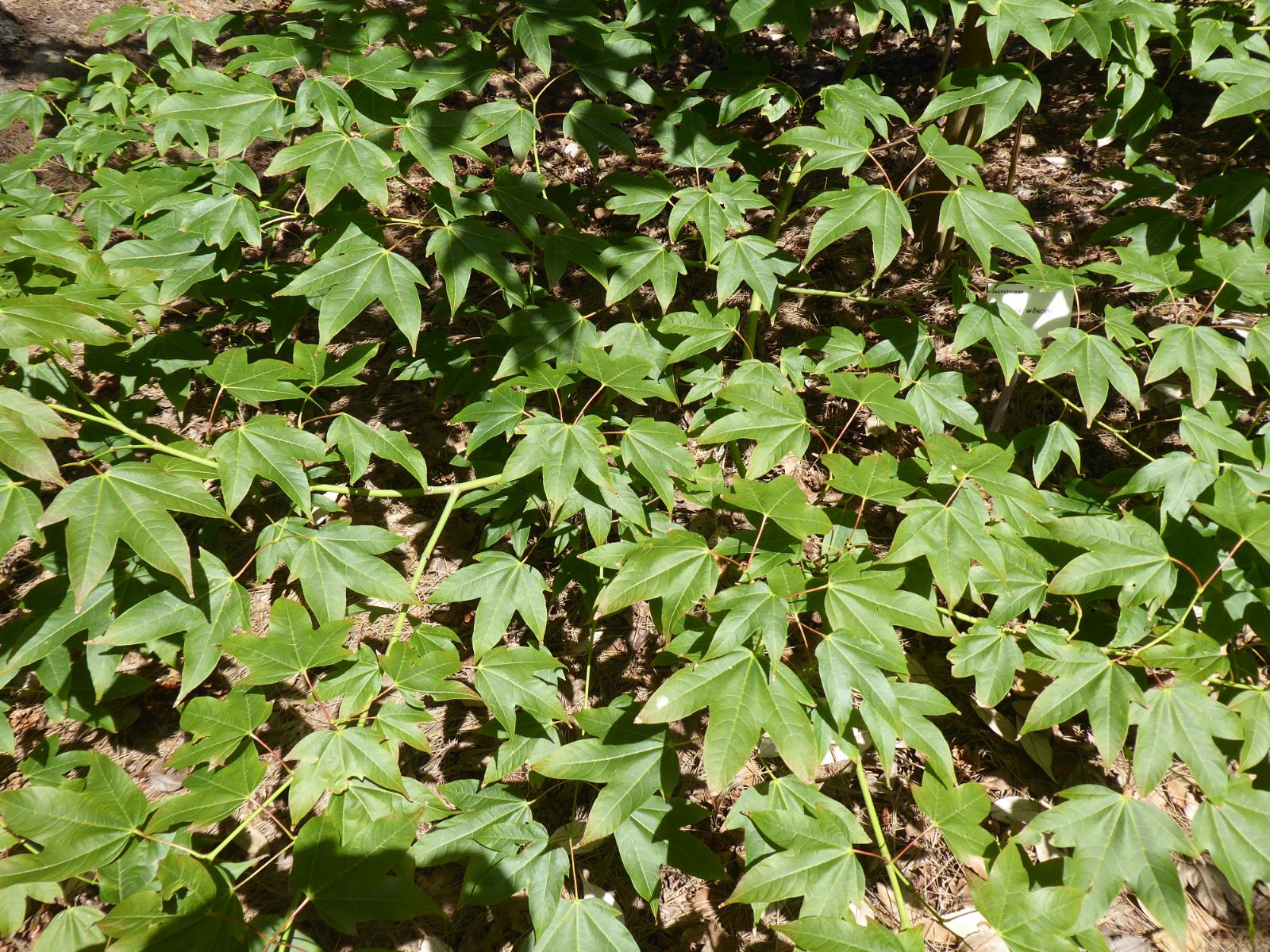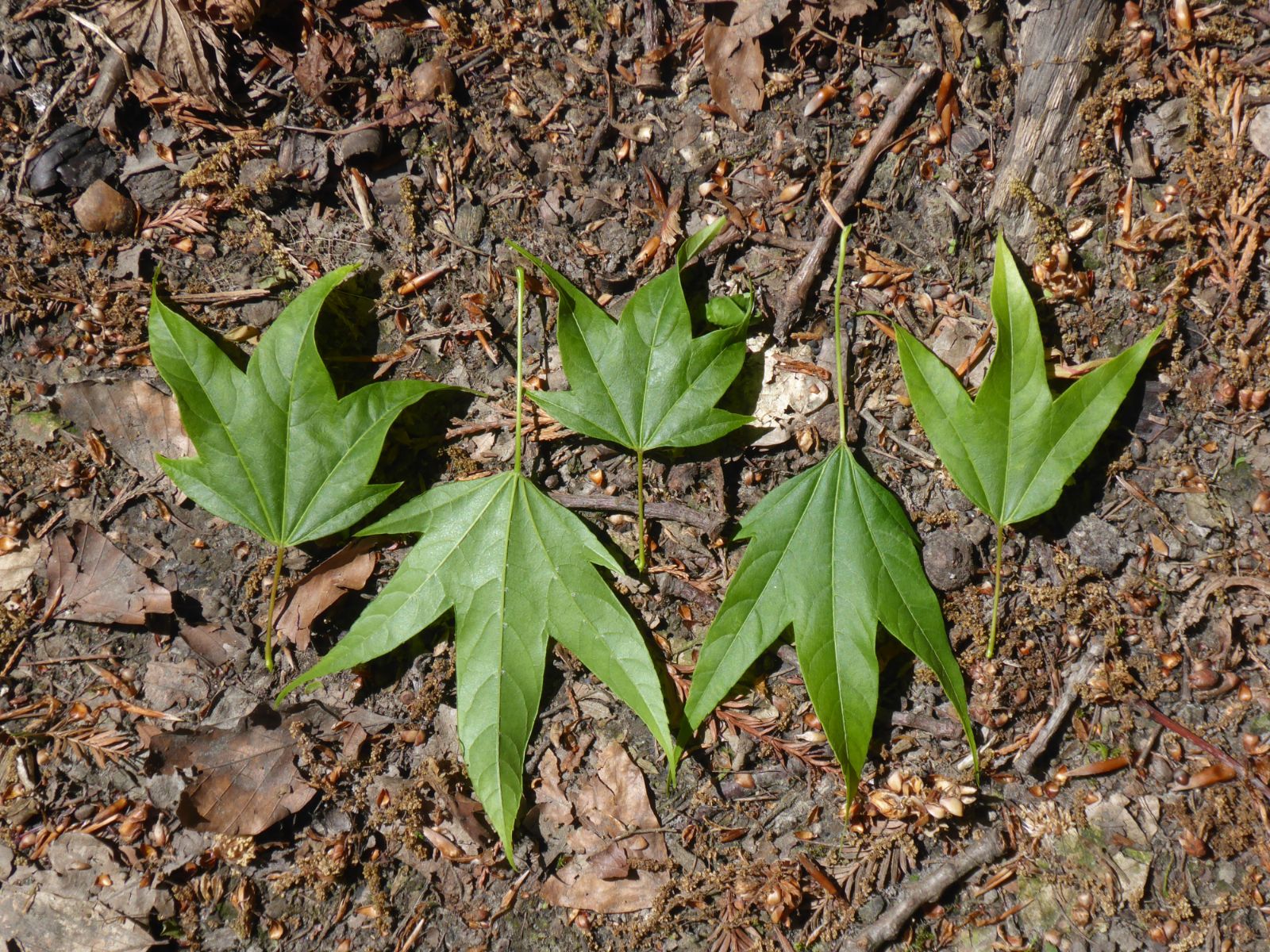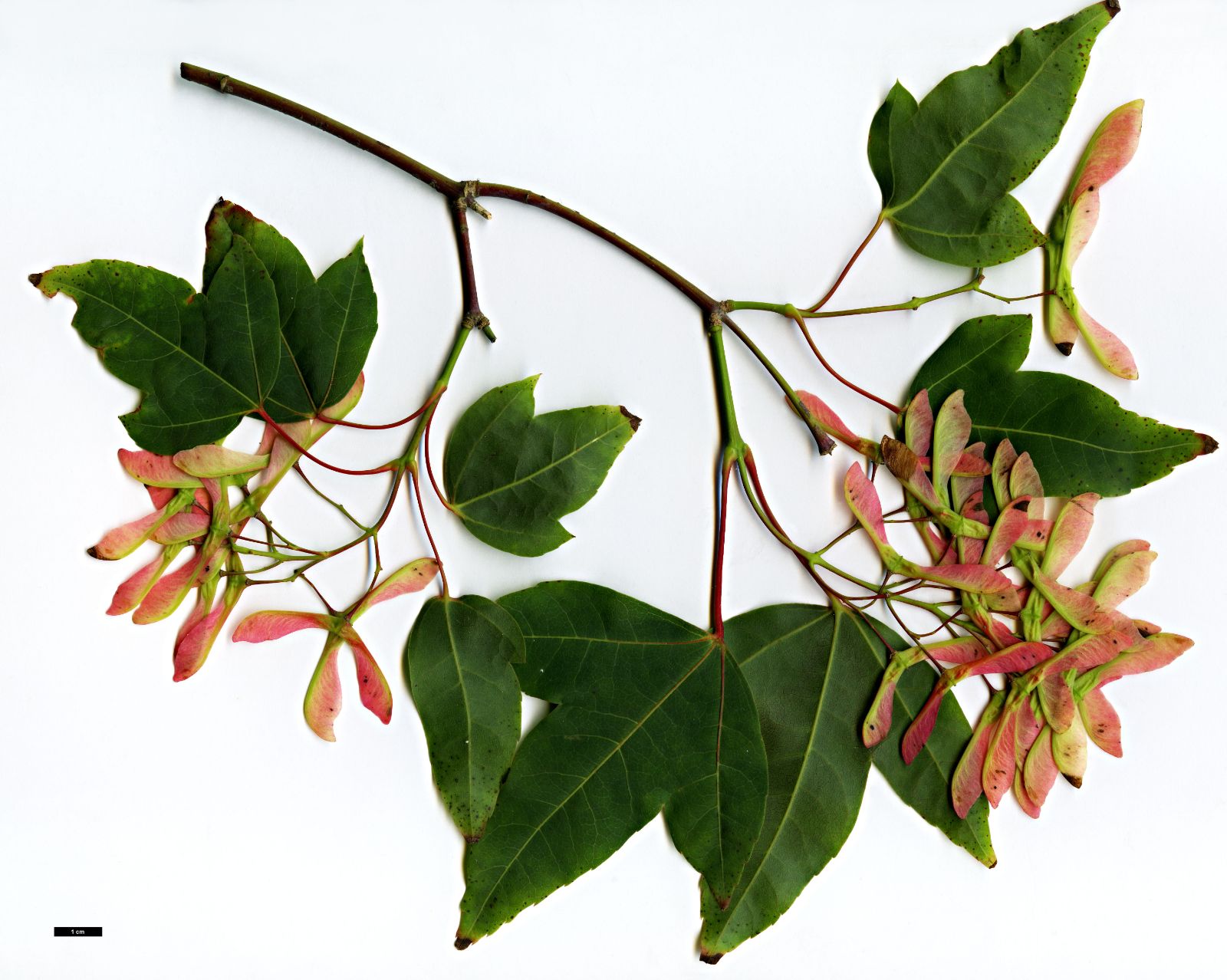Acer wilsonii
Sponsor
Kindly sponsored by
Lawrence Banks
Credits
Dan Crowley (2020)
Recommended citation
Crowley, D. (2020), 'Acer wilsonii' from the website Trees and Shrubs Online (treesandshrubsonline.
Genus
- Acer
- Sect. Palmata, Ser. Sinensia
Common Names
- Wilson's Maple
Synonyms
- Acer campbellii subsp. wilsonii (Rehder) de Jong
- Acer angustilobum Hu
- Acer sichourense (W.P. Fang & M.Y. Fang) W.P. Fang
- Acer taipuense W.P. Fang
Other taxa in genus
- Acer acuminatum
- Acer amplum
- Acer argutum
- Acer barbinerve
- Acer buergerianum
- Acer caesium
- Acer calcaratum
- Acer campbellii
- Acer campestre
- Acer 'Candy Stripe'
- Acer capillipes
- Acer cappadocicum
- Acer carpinifolium
- Acer 'Cascade'
- Acer caudatum
- Acer ceriferum
- Acer chapaense
- Acer chienii
- Acer circinatum
- Acer cissifolium
- Acer × conspicuum
- Acer cordatum
- Acer coriaceifolium
- Acer × coriaceum
- Acer crataegifolium
- Acer davidii
- Acer diabolicum
- Acer distylum
- Acer divergens
- Acer duplicatoserratum
- Acer elegantulum
- Acer erianthum
- Acer 'Esk Flamingo'
- Acer fargesii
- Acer fenzelianum
- Acer flabellatum
- Acer forrestii
- Acer franchetii
- Acer × freemanii
- Acer fulvescens
- Acer 'Gimborn'
- Acer ginnala
- Acer glabrum
- Acer 'Gold Coin'
- Acer granatense
- Acer grandidentatum
- Acer griseum
- Acer heldreichii
- Acer henryi
- Acer × hillieri
- Acer hookeri
- Acer hyrcanum
- Acer japonicum
- Acer kawakamii
- Acer komarovii
- Acer laevigatum
- Acer laurinum
- Acer laxiflorum
- Acer lobelii
- Acer longipes
- Acer macrophyllum
- Acer mandshuricum
- Acer maximowiczianum
- Acer maximowiczii
- Acer metcalfii
- Acer miaotaiense
- Acer micranthum
- Acer 'Mindavi'
- Acer 'Minorient'
- Acer miyabei
- Acer miyabei × campestre
- Acer monspessulanum
- Acer morifolium
- Acer 'Mozart'
- Acer oblongum
- Acer obtusifolium
- Acer okamotoanum
- Acer oliverianum
- Acer opalus
- Acer orientale
- Acer palmatum
- Acer papilio
- Acer pauciflorum
- Acer pectinatum
- Acer pensylvanicum
- Acer pentaphyllum
- Acer pentapotamicum
- Acer pictum
- Acer pilosum
- Acer pinnatinervium
- Acer platanoides
- Acer platanoides × amplum
- Acer platanoides × truncatum
- Acer × pseudoheldreichii
- Acer pseudoplatanus
- Acer pseudosieboldianum
- Acer pubinerve
- Acer pycnanthum
- Acer rubescens
- Acer rubrum
- Acer rufinerve
- Acer saccharinum
- Acer saccharum
- Acer sempervirens
- Acer 'Serpentine'
- Acer serrulatum
- Acer shenkanense
- Acer sieboldianum
- Acer sikkimense
- Acer 'Silver Cardinal'
- Acer 'Silver Ghost'
- Acer sinense
- Acer sinopurpurascens
- Acer spicatum
- Acer stachyophyllum
- Acer taronense
- Acer tataricum
- Acer tegmentosum
- Acer tenellum
- Acer tetramerum
- Acer tibetense
- Acer tonkinense
- Acer triflorum
- Acer truncatum
- Acer tschonoskii
- Acer turkestanicum
- Acer tutcheri
- Acer ukurunduense
- Acer velutinum
- Acer wardii
- Acer 'White Tigress'
- Acer × zoeschense
A deciduous tree to 15 m. Bark greyish-brown. Branchlets glabrous, purplish-red or greenish, turning darker. Buds, ovoid, with 4 pairs of scales. Leaves pentagonal in outline, base truncate to cuneate, 3– to 5-lobed, 9–12 × 7–12 cm, lobes broadly ovate to lanceolate, apically acute or acuminate, basal lobes smaller where present, margins entire, or nearly so, except for few appressed teeth in apical parts, upper surface dark green, lower surface paler, glabrous except for tufts in vein axils; petiole 2–3 cm long, green, glabrous, autumn colours yellow. Inflorescence paniculate. Flowers 5-merous, usually dioecious, peduncles 2–3 cm long and slender, sepals and petals ovate, sepals red, petals white, petals as long, or longer than sepals, stamens eight, inserted inside the glabrous nectar disc, ovary pilose. Samaras 2.5 to 3 cm long, wings usually spreading nearly horizontally. Nutlets ovoid. Flowering in April, fruiting in October (Xu et al. 2008).
Distribution Myanmar China Northern Guangdong, northern Guangxi, Guizhou, Henan, Hubei, Hunan, Jiangsu, Jiangxi, southern Shaanxi, eastern Sichuan, Xizang, Yunnan, Zhejiang Vietnam
Habitat Forests, between 900 and 2000 m asl.
USDA Hardiness Zone 7-8
RHS Hardiness Rating H4
Conservation status Least concern (LC)
Taxonomic note Acer wilsonii was treated as a subspecies of A. campbellii by van Gelderen et al. (1994) though at specific rank by Xu et al. (2008), whose treatment is followed here. It is morphologically distinct from A. campbellii, with smaller, more entire-margined leaves that are predominantly three-lobed in maturity, rather than seven-lobed and serrated. Its flowers also have a glabrous disk, which in A. campbellii is hairy. It is more closely allied to A. tutcheri and A. confertifolium than to A. campbellii (Eom et al. 2011). van Gelderen et al. (1994) list three varieties within A. wilsonii (as A. campbellii subsp. wilsonii). Following Xu et al. (2008) var. kwangtungense is treated as a synonym of A. pubinerve, while var. longicaudatum is a synonym of A. wilsonii (both originally assigned as varieties of A. angustilobum, a synonym of A. wilsonii), as is var. obtusum.
Acer wilsonii was first discovered by Henry in Yunnan and then by Wilson in Hubei in 1900 Bean (1976a). It was he who successfully introduced the species, in 1907, under W. 233, while collecting for the Arnold Arboretum in western Hubei (Sargent 1913). A plant of this collection grows in the maple collection at RBG Kew, measuring 10 m tall in 2010, though with some dieback by then, having been planted in 1908 (The Tree Register 2018). Many of the younger plants in cultivation appear derived from this collection, with three-lobed leaves that hang slightly clawed. The UK and Ireland Champion, standing at 12.5 m tall in 2017, grows at the Sir Harold Hillier Gardens, Hampshire (The Tree Register 2018).
The species can make an elegant tree, as stated by Bean (1976a), where afforded good growing conditions. However, plants at Westonbirt have made somewhat leggy, ungainly specimens, growing in much shade and searching for light. A young tree at Arboretum Wespelaar, Belgium, growing in partial shade, is forming a slightly sprawling tree. This was grown from seed of Foster 0614, collected from Dong’an County, Hunan at around 450 m (M. Foster, pers. comm. 2020), which is a lower elevation than that stated for the species by Xu et al. (2008). The parent plant was a ‘tree to 7 m, with five-lobed leaves, basal lobes short, main three lobes seven cm from base, unusually long pointed’ (M. Foster, pers. comm. 2020). Originally determined as Acer kweilinense (with an image labelled as such in Grimshaw & Bayton (2009) (p. xii)), then later as A. elegantulum by Peter Gregory, the more mature foliage lacks the leaf serrations characteristic of both those species have and it is a good fit for A. wilsonii. Though apparently not reliably hardy in Kent (M. Foster, pers. comm. 2020), it has performed well thus far in Belgium, with young leaves tinted pinkish-red. New material was introduced to North American collections in 2018, from Hubei, collected under NACPEC 18–018 and currently grown at the United States National Arboretum, Washington D.C., and at The Morton Arboretum, Illinois.
Acer wilsonii appears closest in leaf to Acer tutcheri, though like A. elegantulum, A. tutcheri also has more serrated lobes. The number, and degree of lobing in A. wilsonii can be variable (see image), while Eom et al. (2011) state that it can be separated from A. tutcheri by the number of serrations on the central lobe (using leaves of mature plants). Those of A. wilsonii have between zero and ten serrations, whereas those of A. tutcheri have between 14 and 20. Furthermore, the flowers of A. wilsonii are 5-merous, while in A. tutcheri they are 4-merous (Xu et al. 2008; Eom et al. 2011). DJHG 11134, collected by Dan Hinkley on Leigongshan, Guizhou in 2011, has been circulated as A. tutcheri, though belongs to A. wilsonii. Though its juvenile growth can be prominently toothed, mature leaves have far less teeth, and lobing consistent with A. wilsonii. An example grows at Wespelaar, and like Foster 0614, has reddish new growth. Material from Thailand previously determined as A. wilsonii has since been referred to a new species, A. pseudowilsonii (Chen 2010).











